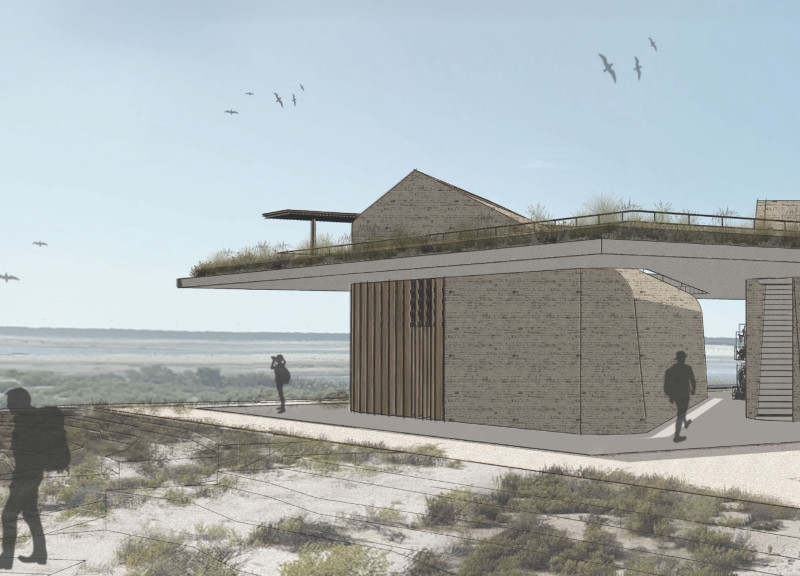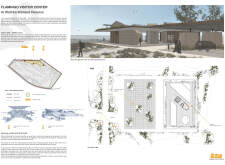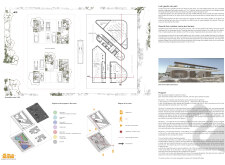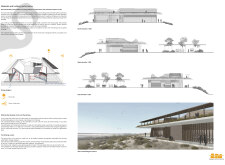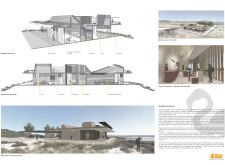5 key facts about this project
The Flamingo Visitor Center at Al Wathba Wetland Reserve is an architectural project that exemplifies sustainable design principles while fostering a direct connection between visitors and the environment. Located within a biodiverse wetland ecosystem, the center functions as an educational hub, offering insights into the local flora and fauna, particularly the diverse bird species inhabiting the area. This visitor center is not merely a structure; it is a tool for conservation awareness and ecological understanding, structured to enhance the visitor experience through thoughtfully designed spaces.
The layout of the Flamingo Visitor Center features an arrangement that encourages interaction and engagement with the natural surroundings. The building is intentionally designed with multiple functional zones, including information and reception areas, educational spaces, a café, and viewing points. Each of these elements serves a specific function, creating a cohesive flow that guides visitors through the center while promoting exploration of the wetland ecosystem.
Unique design approaches have been employed throughout the project. The architecture integrates seamlessly with the landscape, utilizing locally sourced materials such as clay brick, reclaimed wood, and glass. This choice reflects a commitment to sustainability, as the materials not only minimize the environmental footprint but also echo local building traditions. The inclusion of features such as green roofing and permeable paving further emphasizes the project’s dedication to ecological principles. The building's orientation and passive solar design strategies are particularly noteworthy; these aspects optimize natural light, enhance energy efficiency, and provide a comfortable environment for both visitors and wildlife.
The extensive use of glass in the facade allows unobstructed views of the wetlands, creating a visual dialogue between interior spaces and the exterior landscape. Additionally, strategically placed viewing points and bird hides serve to enhance the visitor experience by allowing for close observation of wildlife without disrupting their natural habitats. Sustainable systems, such as rainwater harvesting and solar energy integration, highlight a functional approach to design that aligns with the site's ecological goals.
For those interested in a deeper understanding of the architectural planning and design, examining elements such as architectural plans, architectural sections, and the various architectural designs will provide further insights. This thorough exploration will highlight the innovative ideas that underpin the Flamingo Visitor Center, underscoring its significance as both a visitor destination and an educational platform for conservation. Visitors are encouraged to dive into the project presentation for a comprehensive overview and detailed analysis of its design features and ecological considerations.


